When I found out that at one time there was a German concert flute made of of aluminum, I was intrugued. Aluminum? Everybody wants a flute made of solid silver, if not gold. Stories abound about the effects of material on the sound of the flute. Silver is bright, gold is rich, platinum is powerful. It certainly seems to make sense…except it is all nonsense. The metal of the instrument does not vibrate enough to make a difference. Full stop. It is the shape of the inner chamber–the geometry of the air column–that determines the sound, along only with the smoothness of the bore.
But we never really believe it. Synesthesia is hard at work: it looks different, it feels different–it MUST sound different. Plus we have the flute manufacturers hard at work on angles to sell instruments–with an average $6000 premium on a gold flute, for instance…
So an aluminum flute…hmmm…How would THAT play?
I wanted to find out.
They are not easy to find. Made by Gerhard Rudolf Uebel in the then GDR (East Germany) for only about 10 years starting in 1959, these flutes were iconoclastic in the extreme, with the body milled from a solid rod of aluminum, and keys and head with an interesting, modernistic design plated in silver.
I spent quite a bit of time looking for one, and finally did find one in splendid shape on eBay, which I won–to my great delight.
When I got it and started to play, I was quite surprised. It is a professional flute of the highest calibre, which I had not expected from an East German instrument, which tend to be OK but often rather crudely made. This one is beautifully machined, with fast and light keywork. The bore is a wonder–straight and smooth as a rifle barrel; the body is wonderfully finished inside and out.
These flutes came with three embouchure plate designs. There was a reform plate (with wings) in plastic, a normal embouchure plate in plastic, and a normal one in metal. Mine came with the reform head. The embouchure hole is oval, about the same size as a standard square Boston cut, with a fair undercut on the sides and a huge undercut on the front chimney wall–in fact the front of the chimney joints the wall of the tube without any overhang. It is somewhat reminiscent of a Cooper design, and it blows very nicely.
The sound is quite unique as well. The tone is quite bright, but not shrill or thin. It is full bodied and present. It feels quite focused and very solid, but the sound is neither airy like the old French flutes nor “roomy” like modern designs. The sound seems to have a well-defined edge, and if you find the sweet spot, it cuts through like no other flute I have played.
Let’s have a look at this very unusual instrument:
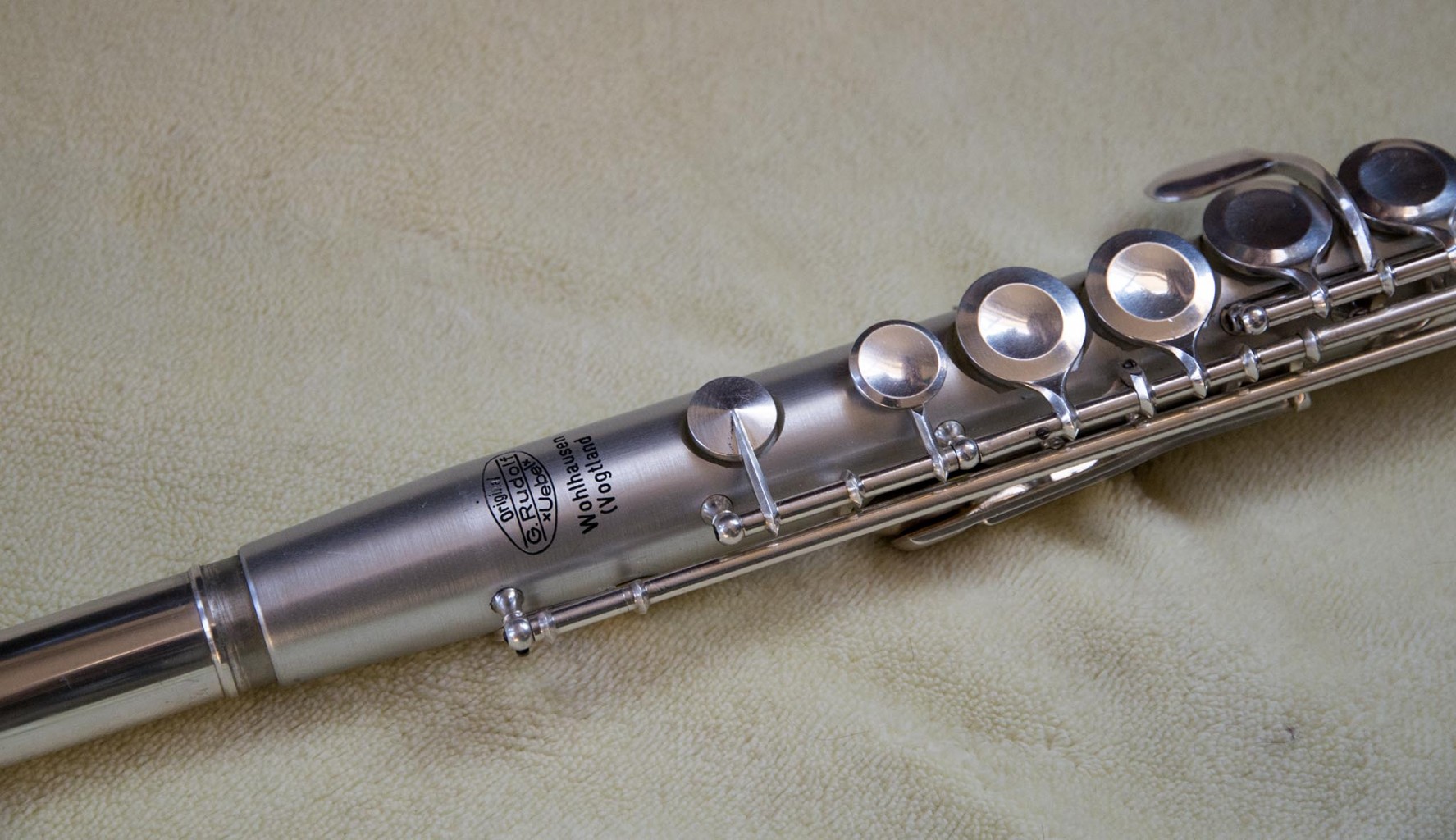 Here is the top part of the flute. The long head joint fits directly into the body without a tenon socket. Keys are quite oversized compared to a normal Boehm flute, and the body is as thick as a wooden instrument.
Here is the top part of the flute. The long head joint fits directly into the body without a tenon socket. Keys are quite oversized compared to a normal Boehm flute, and the body is as thick as a wooden instrument.
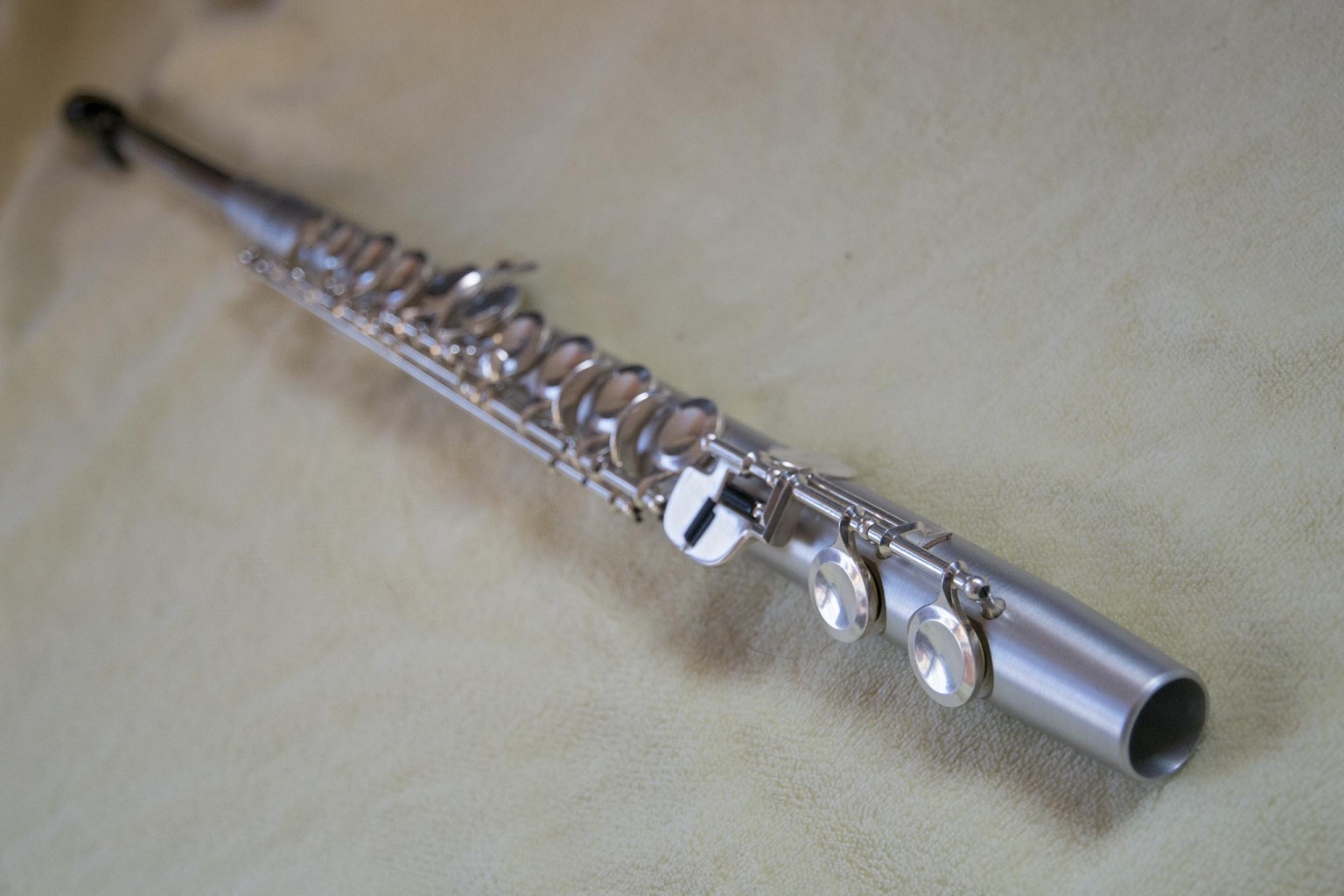 The flute is of unibody construction, with no detachable foot joint. Both ends of the flute taper, which to some people makes the body resemble a cigar, hence the nickname. Note the large angled pinky keys, with D# roller. The whole pinky cluster is rotated quite far outward, with the rod of the foot keys angled about 2/3 of the way towards the front of the body keys, instead of right in the middle, as all teachers recommend. It is quite comfortable, nevertheless, and actually feels better to me than the standard position of the foot keys.
The flute is of unibody construction, with no detachable foot joint. Both ends of the flute taper, which to some people makes the body resemble a cigar, hence the nickname. Note the large angled pinky keys, with D# roller. The whole pinky cluster is rotated quite far outward, with the rod of the foot keys angled about 2/3 of the way towards the front of the body keys, instead of right in the middle, as all teachers recommend. It is quite comfortable, nevertheless, and actually feels better to me than the standard position of the foot keys.
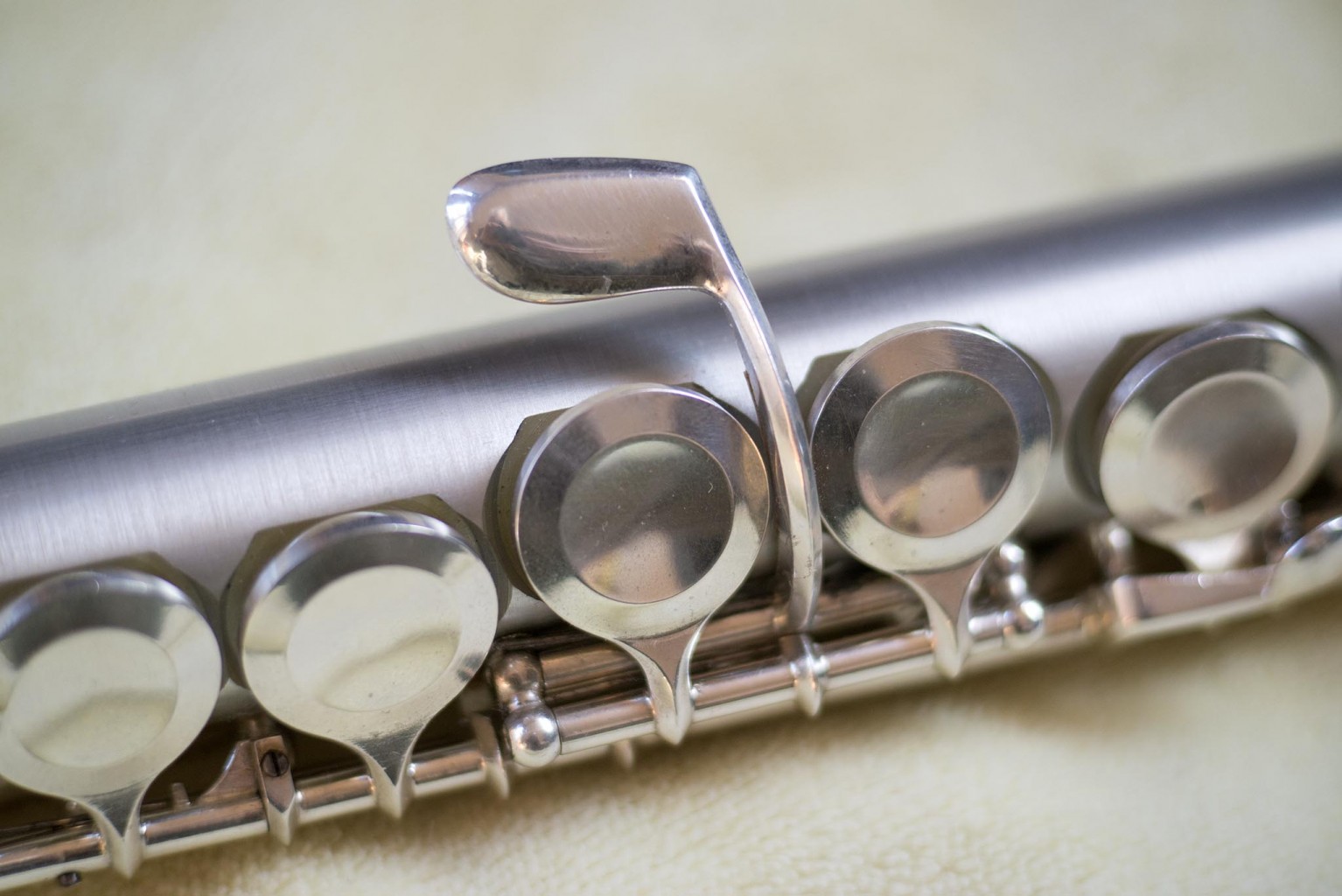 The G# lever has a unique design as well. The keywork is tight and silent.
The G# lever has a unique design as well. The keywork is tight and silent.
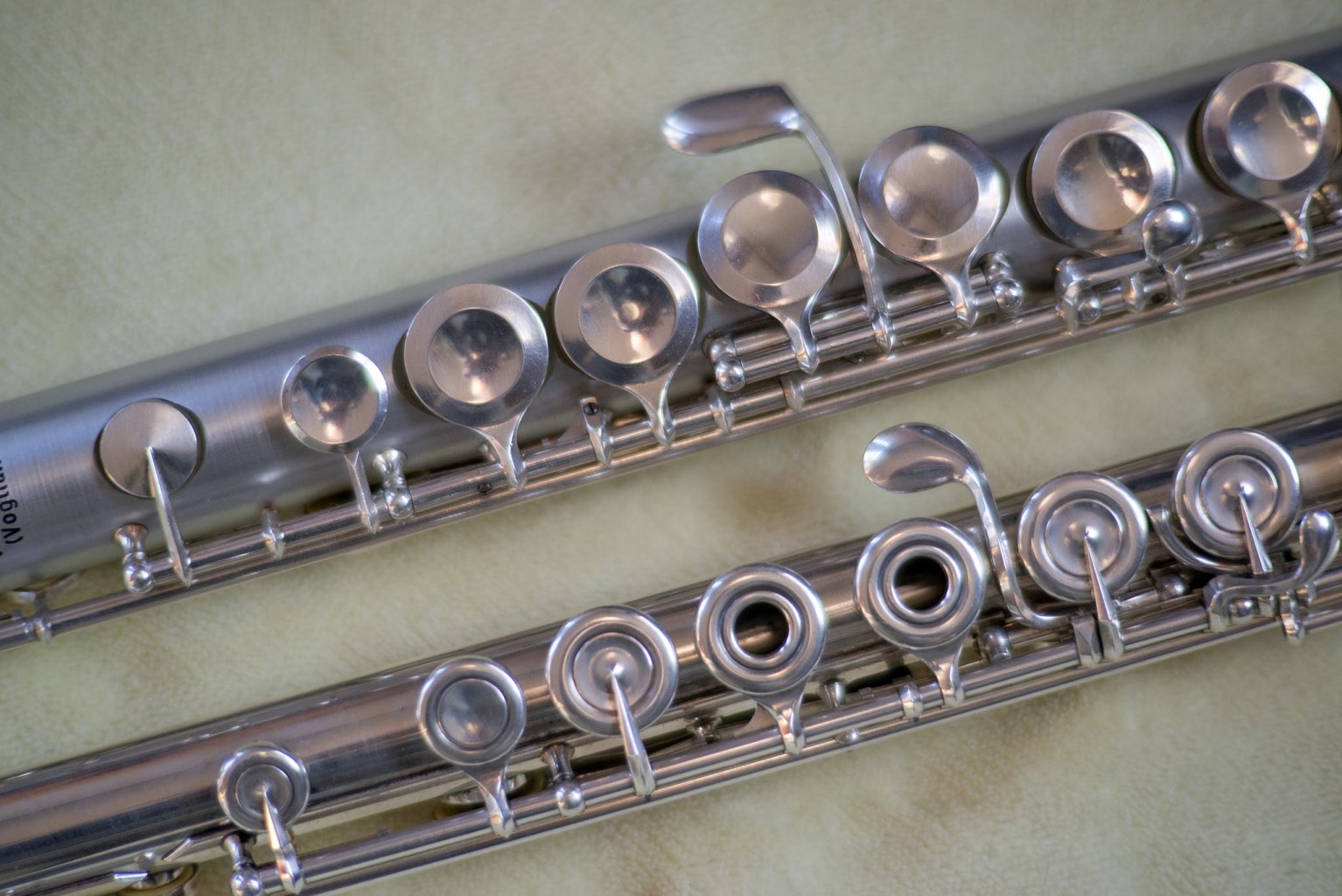 Comparing to a handmade French-style flute, one can see the difference in key sizes. The keywork is quite light and quick, and the deep cups in the keys feel very good to me.
Comparing to a handmade French-style flute, one can see the difference in key sizes. The keywork is quite light and quick, and the deep cups in the keys feel very good to me.
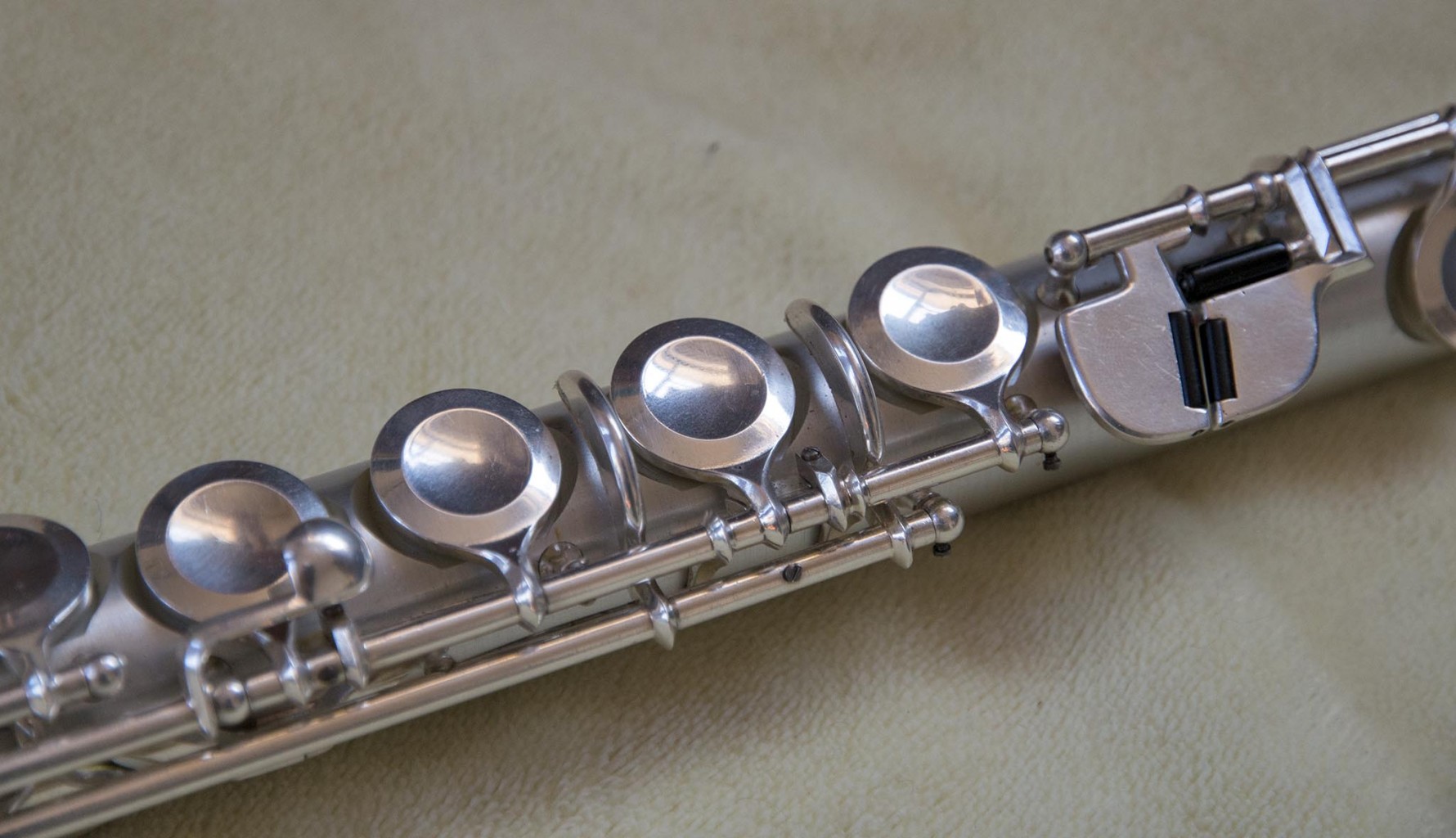 Here is a better view of the foot keys and the unique trill keys. Note also that instead of pins, tiny screws are used to tie the rods. Note also that the posts have set screws. This allows for fine adjustment of the pivot screws (which do not have heads)–an excellent idea IMO.
Here is a better view of the foot keys and the unique trill keys. Note also that instead of pins, tiny screws are used to tie the rods. Note also that the posts have set screws. This allows for fine adjustment of the pivot screws (which do not have heads)–an excellent idea IMO.
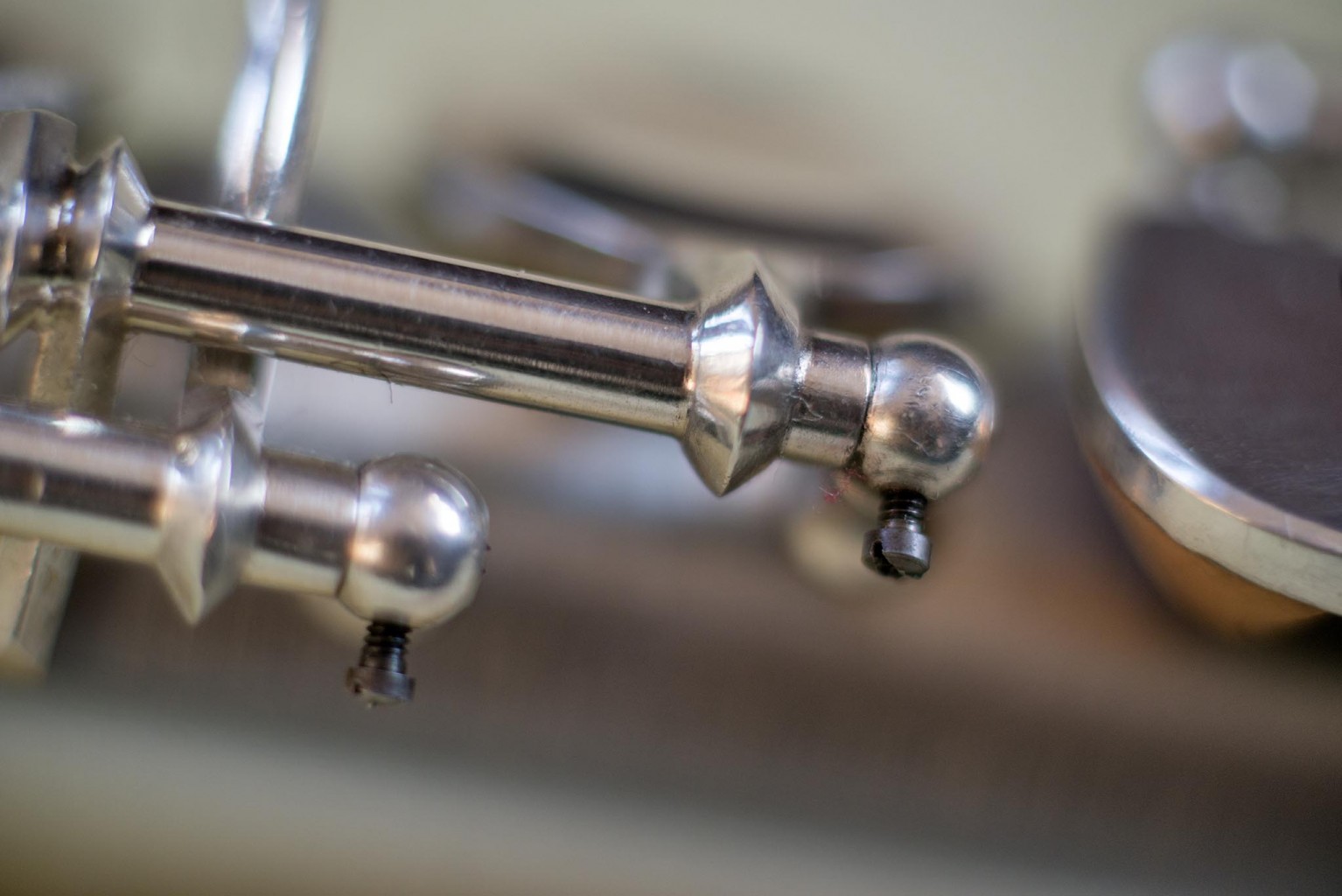 A closer view of the posts with set screws.
A closer view of the posts with set screws.
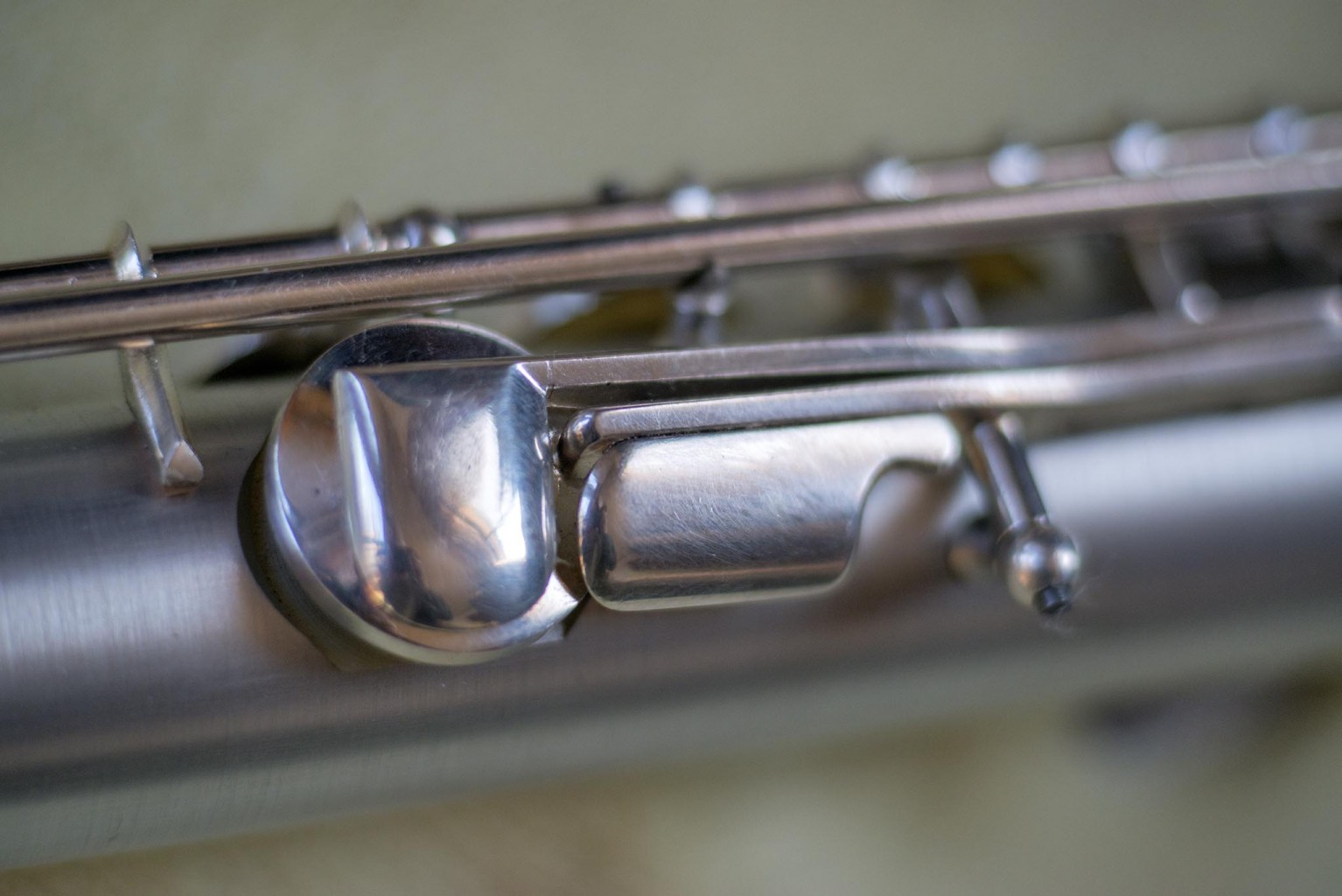
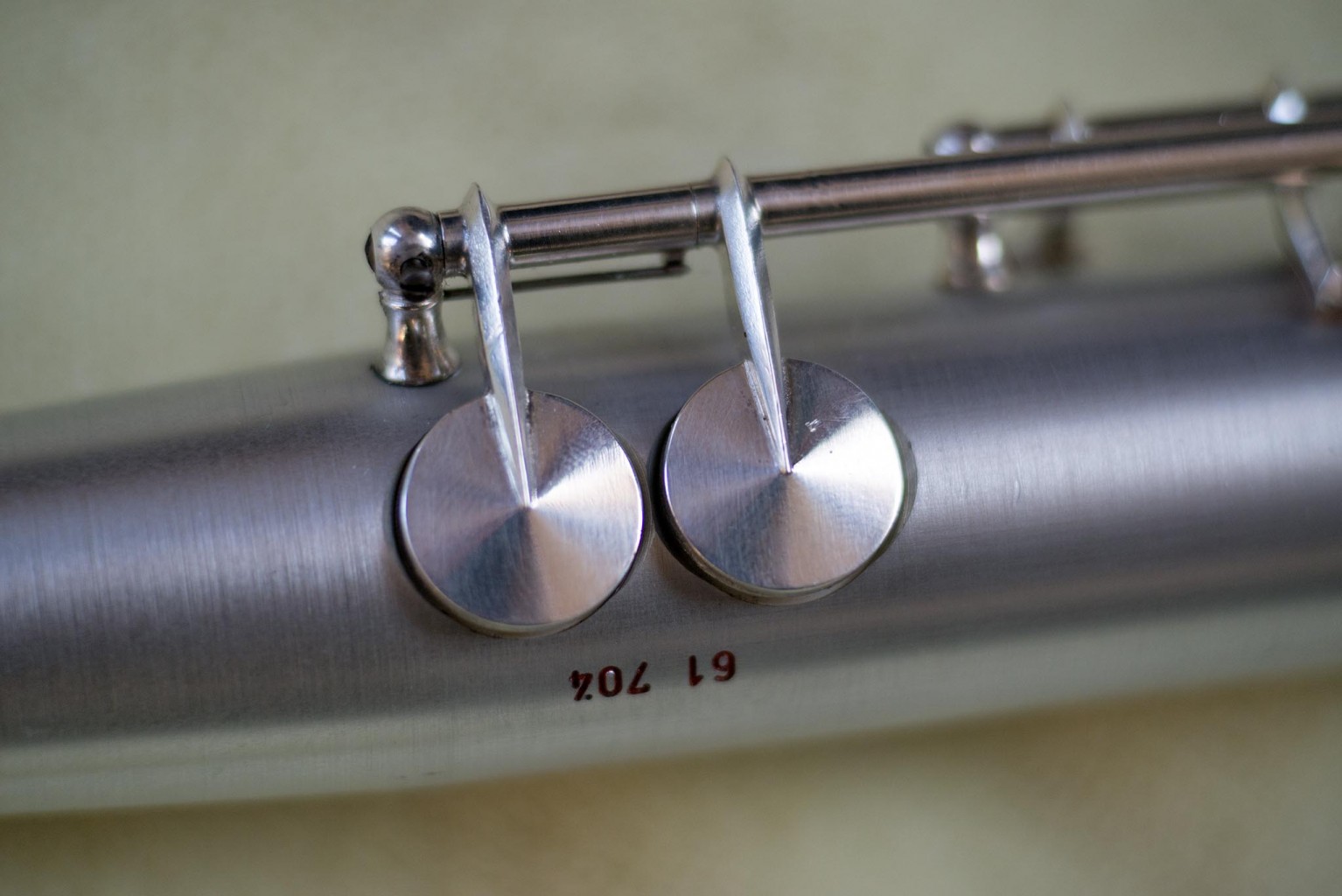
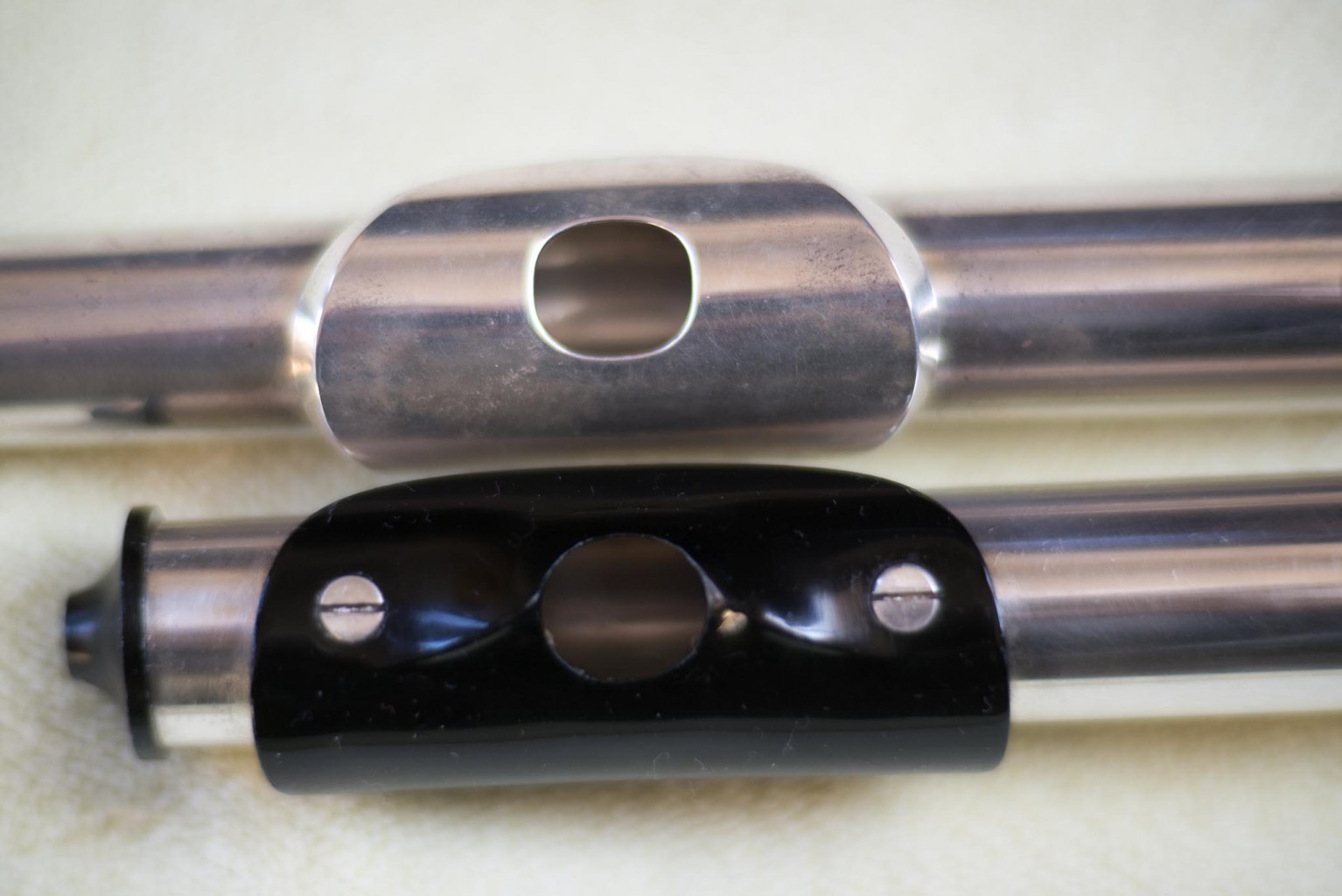
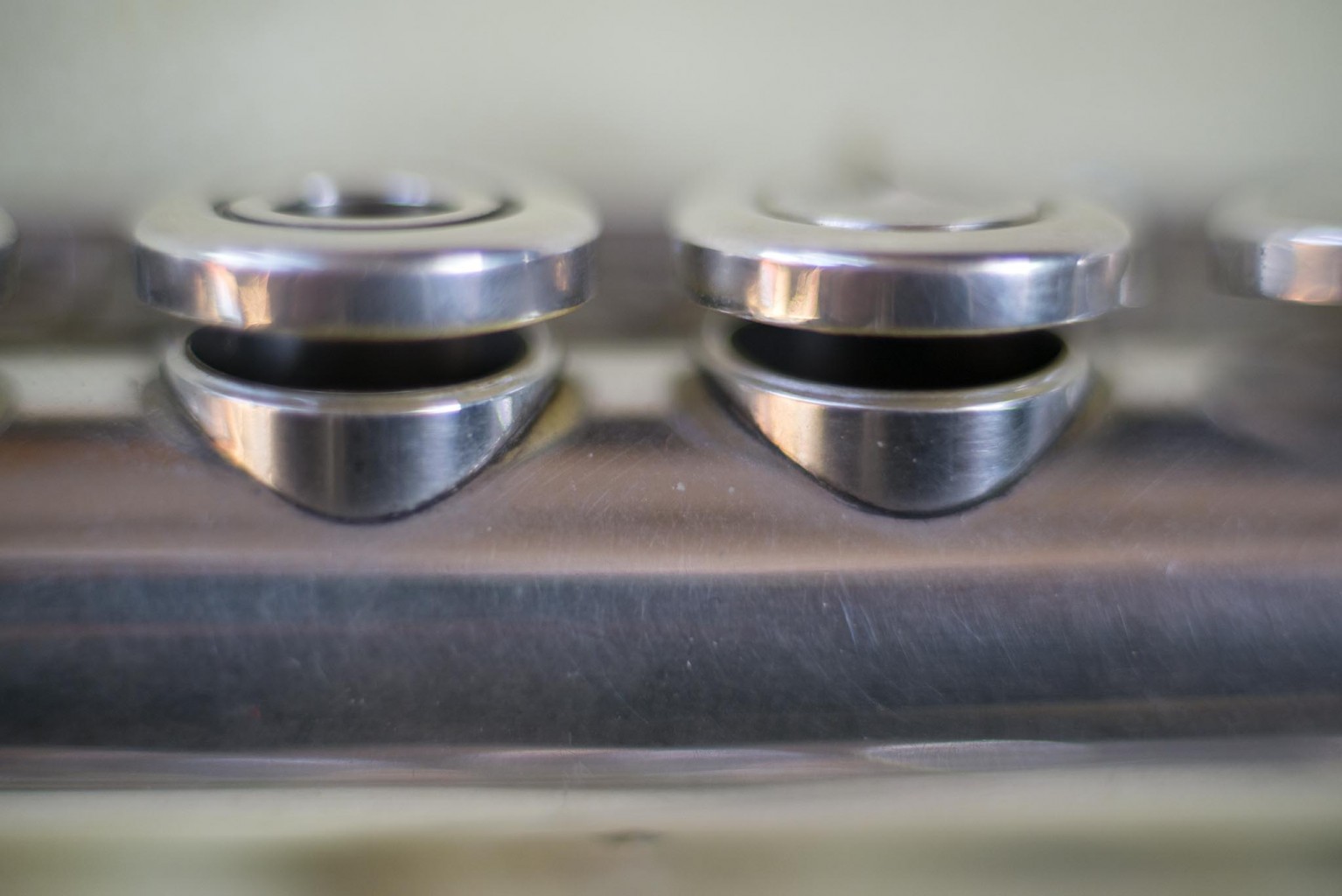
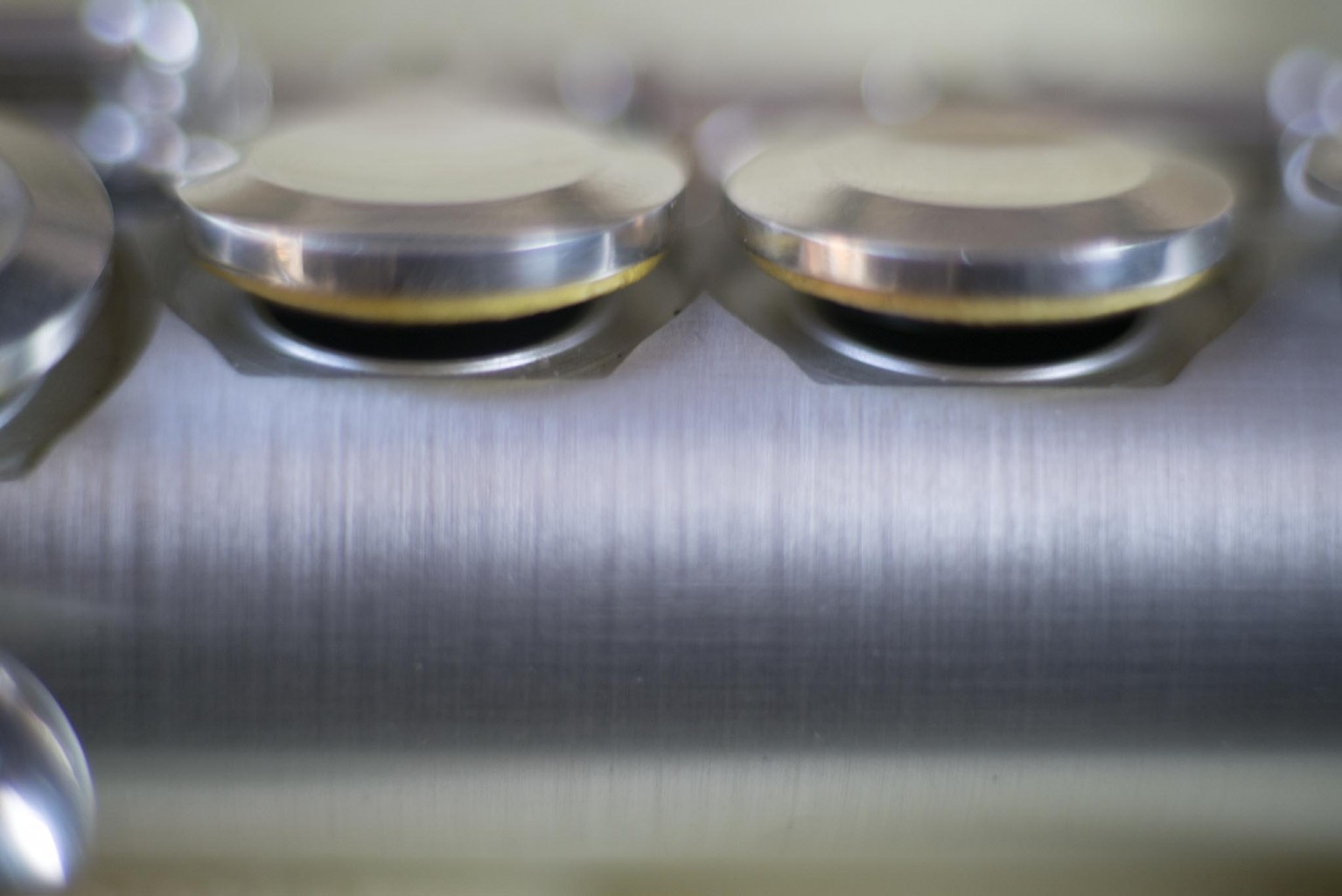
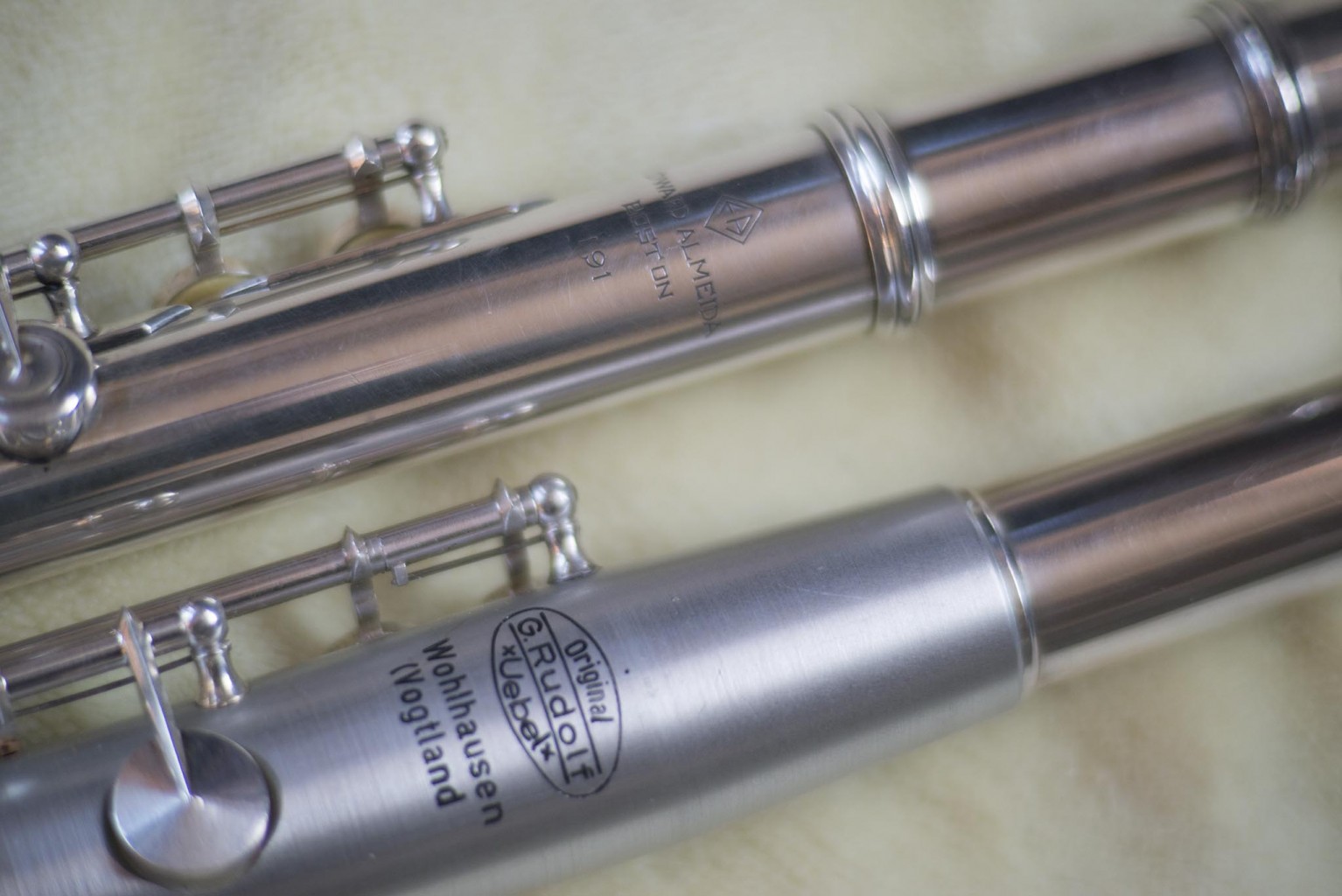
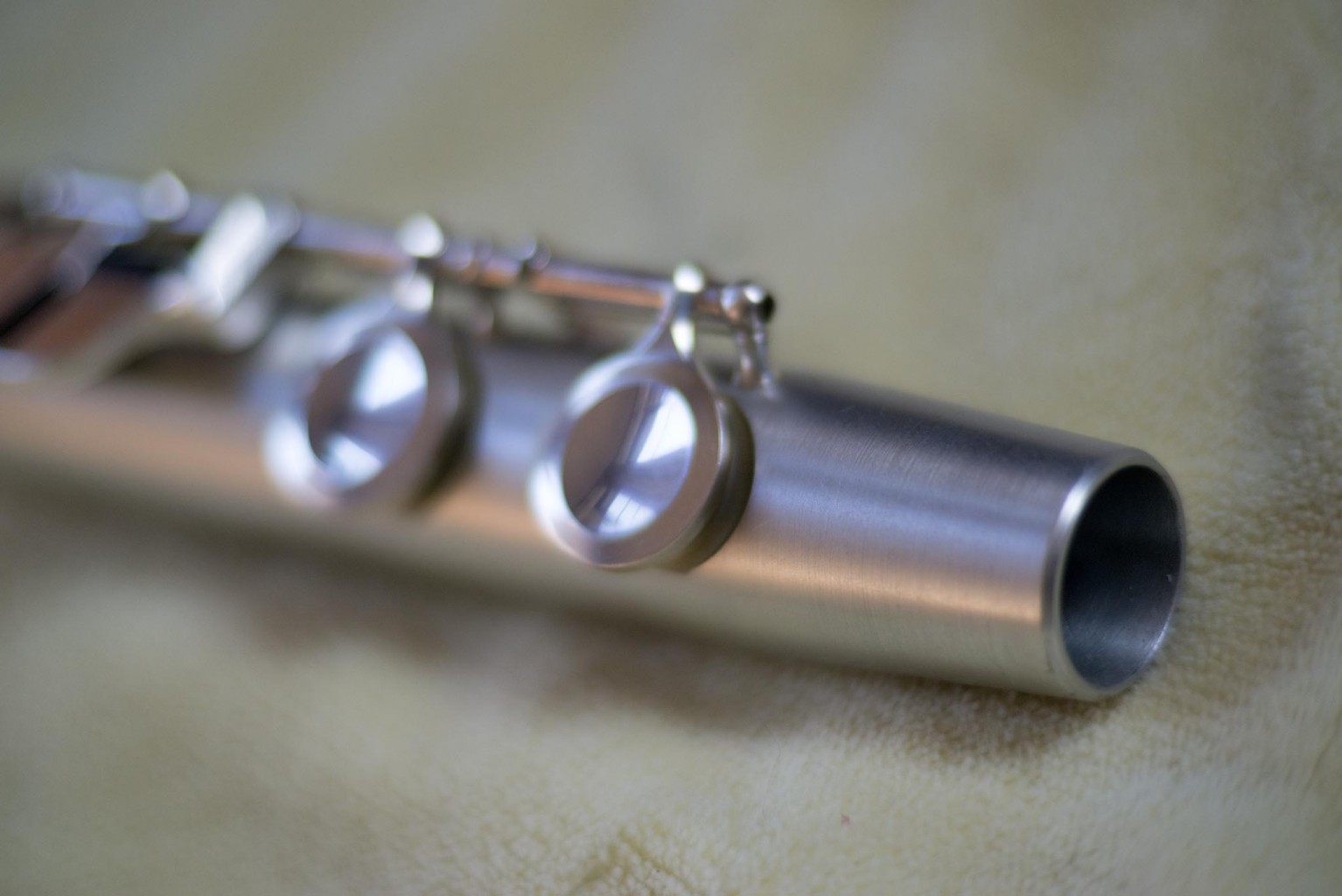

2014/09/28 @ 03:23
Please send me the price of the alluminium sided flute i am interested t buy. It must be new and made with B foot and open holes. May you confirm that aluminium in its head, body and foot exists. If not, may you give me the adress of those who also build the flute Iam interested to have. Thank you in advance for your answer.
Attentiously, yours, Inacio Meneche NIGRI
Myadress is: Rua São Miguel, 211-302
CEP 20530420-420
Cidade do Rio de Janeiro-RJ-Brasil.
2014/09/28 @ 03:29
My comment is that this new (for me) kind of flute should have more diffusion worldwide. It confirms my intuition and motivation to buy one. I see I am not alone in the initiative for finding its makers.
2014/11/06 @ 14:08
I still have one of these flutes. I bought it, or I should say it was bought for me when I was 16, in 1973. I loved it the moment I played it and it remained my main instrument for many years. The tone was always awesome, but did have the tendency to split on ‘E’ notes. In the early 80’s I used it with a Barcus Berry transducer, which fitted where the tuning cork should go, plugged into a host of F/X pedals and a Roland Pitch – Voltage synth, the results were great fun. My Ubel is now in need of much TLC, but I shall keep it. It also has a different head joint to the one shown here, being all metal and remarkably short by comparison. The chunky one part body always looked great and was amazing to hold, and play, it had real “balls” if a flute can. Hope you find one and enjoy it.
2017/02/25 @ 02:11
I do still have one ,I used to play on during my career , I want to sell it, incl. case. build in 1970 nr 116, condition is excellent.
Price 1500 Euro excl charges 20 Euro
2017/12/08 @ 06:40
Hi I wandering if you still sell it ; I can offer 1000€ if it’s ok
2017/12/01 @ 12:02
I love these East German flutes. I would be interested in an Uebel Cigar. Ron….. Do you still have your flute? I can pay 1500 Euro.
2018/03/02 @ 06:00
I bought this flute used years ago. The plastic embouchure plate had been broke and glued. I had Alexander Eppler (flute maker in Seattle) make a blackwood head joint for it after he convinced me of the benefits, as I was after a darker sound. As mentioned above, the sweet spot in the tone color is impressive. Thank you Don for all this great info. A nice surprise.